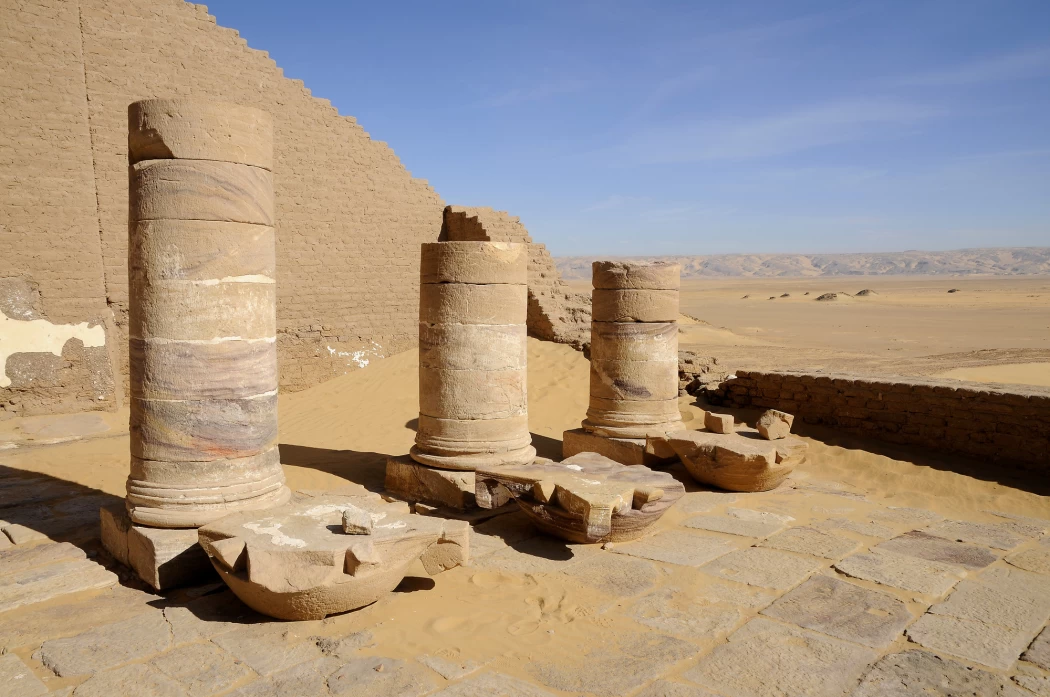
Temple of Dush in Kharga Oasis
Information about Temple of Dush in Kharga Oasis
The Kharga oasis is the southernmost of the large oases in the western desert. It is actually at a latitude similar to that of Dakhla (about 25oN) and therefore also to that of Luxor. It is a little more than 220 km in bird’s eye view from Upper Egypt (although the distance by road is about 330 km). Asiut is the same distance, but to the north, both straight and by car, because this road (60) is much more direct. The nearest oasis, Dakhla, is about 170 km to the west.
The history of the oasis of Kharga has always been conditioned by its strategic position on the caravan routes: it is the first to leave from Luxor towards the other oases of the western desert. Most importantly, it was a stop on the road from Darfur (now Sudan, formerly the kingdom of Kush) to Asiut, on which important goods such as ivory, gold, animals and plants were transported.
This route was called the Darb El Arba'in (“40-day road”) because it was the estimated time to travel it in its entirety, and it represented one of the main routes between the kingdom of Kush and Egypt.
Dush is an archaeological site located in Egypt's Western Desert in El Kharga Oasis. The slave trade was the main cause of the development of the religious, military, and civilian complex known as Dush. It served as a staging area for caravans that were either traveling to Esna or Assiut. It was not just a village but also a military and religious hub, situated along the slave trade route and serving as a stopover for caravans traveling over the desert. Originating from the Roman era, the Temple of Dush, also called Kysis, is devoted to Serapis, Isis, and Harpocrates. It was completely encircled by a Roman stronghold made of mud bricks.
It was constructed in the first century BC under the administration of Domitian and Trajan, and it was embellished in the Hadrian era. The temple was renovated in 1967, and the nearly two millennia that have passed have barely affected the inscriptions. It consists of two chambers that form a sanctuary with a barrel vault. This sanctuary's lofty ceiling is well appreciated. Chapels round the sanctuary on all sides. Two hypostyle halls with mostly complete entrances are contained as well inside the complex of the temple. Here, remnants of column bases are still visible.














